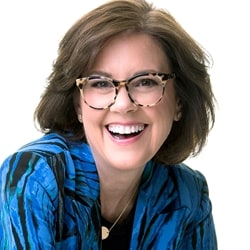The degrees of separation between the "somebodies" and the "nobodies" inch closer together: All voices count. The playing field levels. Yesterday the New York Times (and, previously, CK) pointed me to Rosie O'Donnell's blog. I hadn't been by in a while, so I stopped in.
She's off the air now–and by "air" I mean network TV. The Rosie O'Donnell Show is history and so is her turn on The View. But she's moved her "show" online–she's starred in 27 video blogs since late March. Most of them feature her alone–no script or sponsor. And no interviews, music, wardrobe, or crew. Or spit. Or polish.
Times writer Virginia Heffernan writes,
"All the videos are pure Rosie, in the sense that with their unforgiving lighting and absent production values Ms. O'Donnell, the comic-actress-host, is revealing the last of whatever she was holding back on daytime television."
The promise of social media is that anyone can be a somebody–or, as I've written in the past, anyone can be a "Who." But, correspondingly, anybody can also be a nobody.
The Times writes,
"The spectacle of her both humbled and emboldened this way brings to mind Ross Perot, Tina Brown and 'Rocky III'–the big wheels who decided it's time to return to the old gym and do something real."
The strength of emerging media is this: that everyone has a voice and can be heard. Everyone has a way of looking at things that can inform the thinking of anyone else.
At the same time, the degrees of separation between the "somebodies" and the "nobodies" inch closer together: All voices count. The playing field levels.
And the likes of Rosie–glorious with no makeup, no script, no filter–appear a little more humble, a little more honest, a little more human. It's Rosie .... it's all of us. For real.




